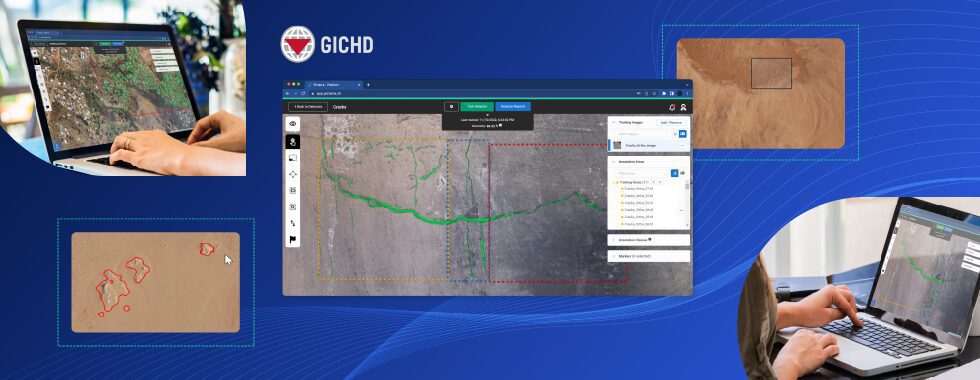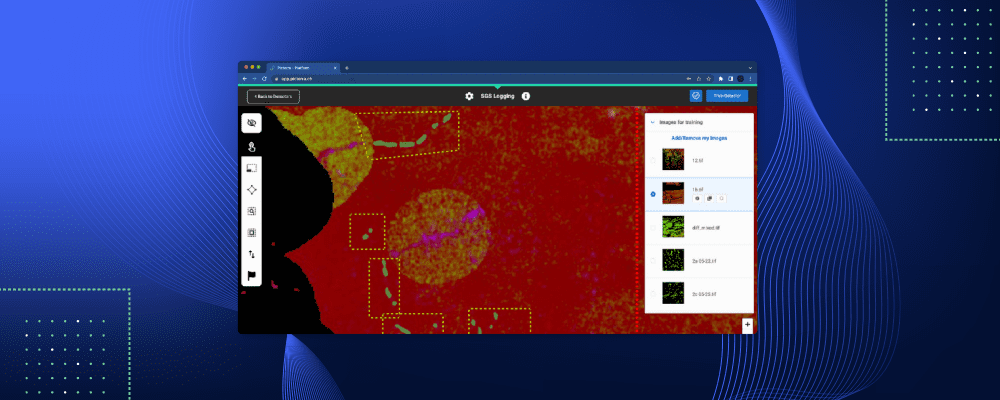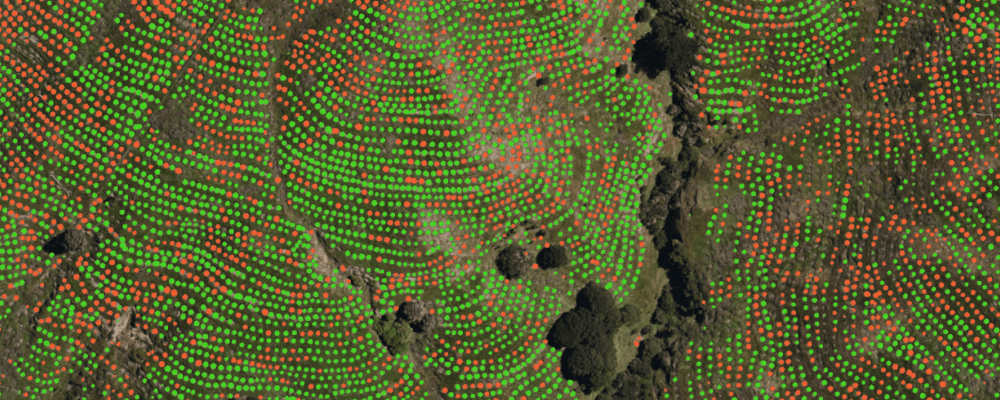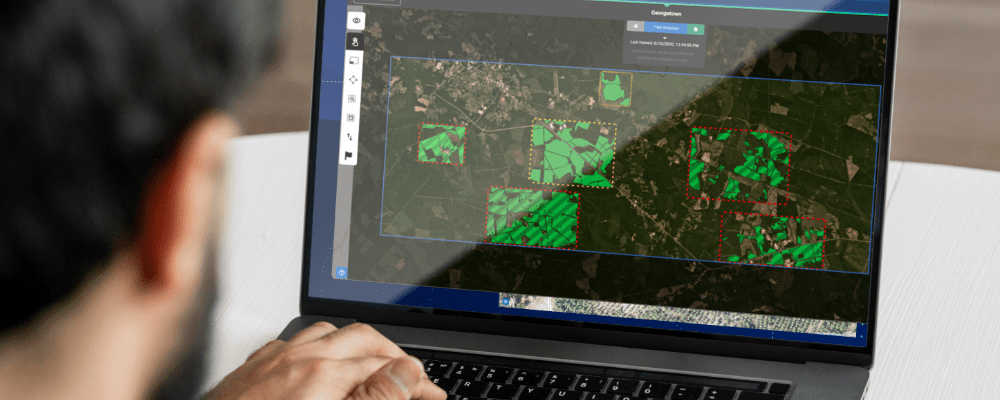Southeast Asia has one of the highest rates of deforestation, at about 1.2% every year, which causes significant environmental damage. Forests play a pivotal role in regulating global temperature. They are effective carbon sinks that absorb excess carbon in the atmosphere. Fewer of them means fewer ways to mitigate the effects of climate change.
How do we begin our work to protect forests when millions of hectares of them span Southeast Asia alone? Using geospatial data and AI, we can see more than we could on foot, and scale our work at a faster rate—whether that’s finding carbon offsetting sites, identifying the causes of deforestation, or mapping sites for mangrove restoration.
Using data and AI to bolster our efforts
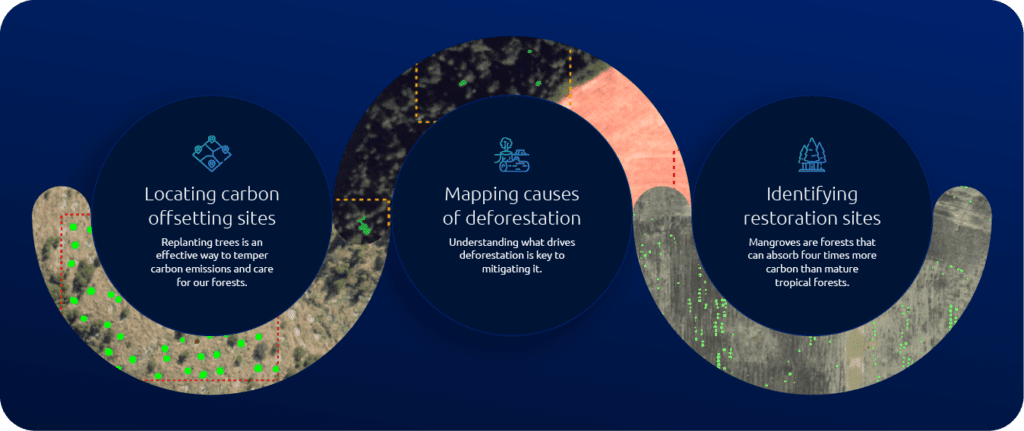
Locating carbon offsetting sites. Replanting trees is an effective way to temper carbon emissions and care for our forests. Thinking Machines, the leading-edge data technology consultancy recently worked with Ayala Land, Incorporated, a leading real estate developer, to map forestland for carbon offsetting as part of their sustainability goals. Traditional methods require on-the-ground site assessments; while highly accurate, they take time and resources. Over 12 weeks, they collected and analyzed geospatial data to find a faster, scalable, and economical way of finding and evaluating carbon offsetting sites. They used open geospatial data and scored 21M hectares across the Philippines according to their suitability for either conservation, restoration, or afforestation projects. The analysis helped the client recommend at least ten priority areas to develop further.
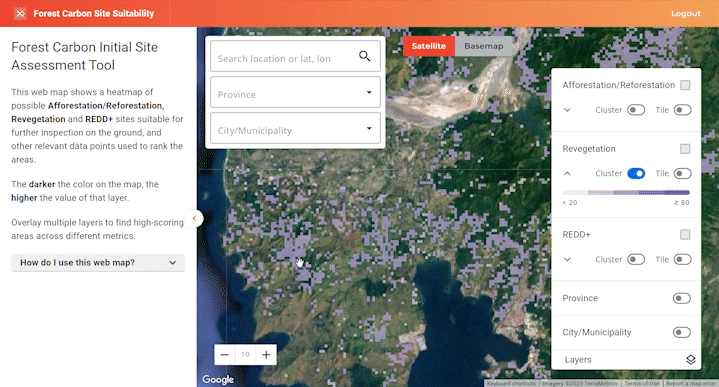
Mapping causes of deforestation. Understanding what drives deforestation is key to mitigating it. Thinking Machines team worked with the Gerry Roxas Foundation to explore machine learning (ML) applications for deforestation classifications, which would inform their grant funding decisions. Using annotated satellite imagery, they trained ML models to classify causes of forest loss, like slash and burn, agricultural expansion, and biophysical factors. Developed model accurately identified and classified deforestation 43% of the time using 8% of the required training data.
Identifying mangrove restoration sites. Mangroves are forests that can absorb four times more carbon than mature tropical forests. Planting them aids forest protection and mitigates the effects of climate change. Together with Conservation International (CI), Thinking Machines mapped sites for mangrove restoration in Indonesia and The Philippines. They helped CI analyze over 1.2 million hectares of total aquaculture area across Indonesia and identified 224,546 hectares as suitable sites for restoration; in the Philippines, identified 81,416 hectares out of 240,296 total as suitable for mangrove restoration.
While these projects highlight AI’s promise to scale forest protection efforts, they can still span several weeks or months. Using solutions like Picterra could make this kind of work even faster. Its intuitive functionality can help Thinking Machines involve clients more directly in projects, like identifying sites. They also wouldn’t have to separate training data development and model training; Picterra allows to do both simultaneously.



